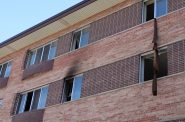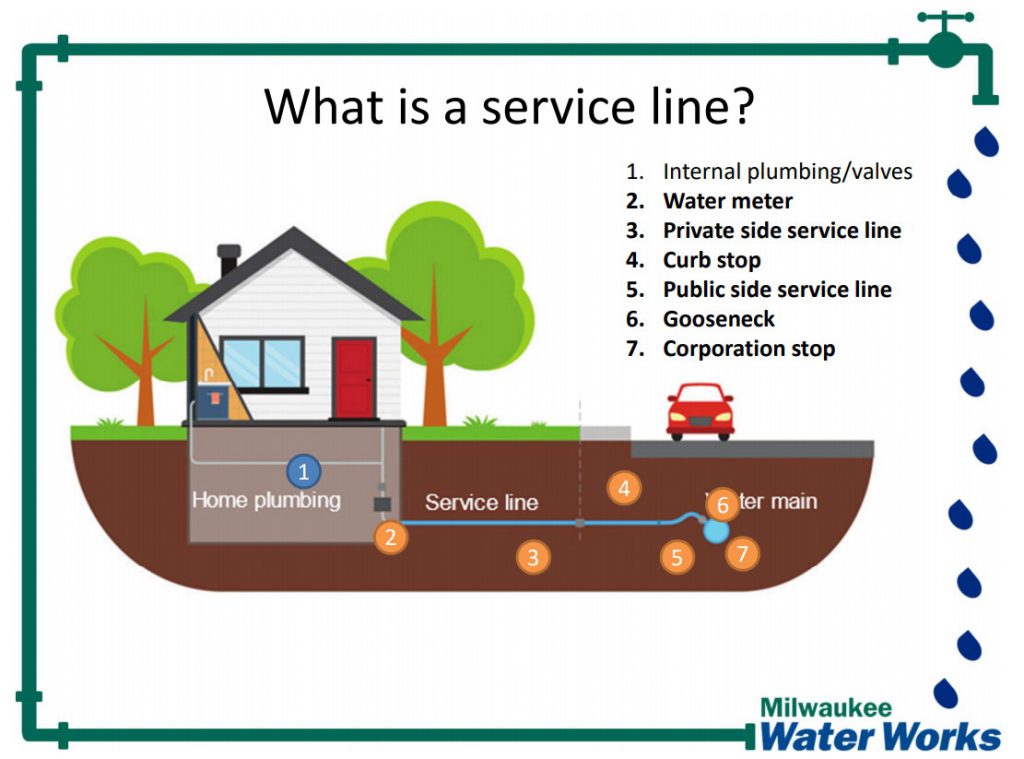Milwaukee on 70-Year Pace To Replace Lead Laterals
What will the city do for property owners that want to voluntarily replace their laterals?
Even as more funding is allocated, the city remains decades away from replacing all of the publicly and privately-owned lead service lines.
A report Wednesday from the Milwaukee Water Works (MWW) highlighted the challenges and opportunities with replacing the approximately 73,000 known lead service lines that connect buildings to water mains.
A total of 998 lead laterals (service lines) were replaced in 2019 said MWW Superintendent Karen Dettmer. Of those replaced, 670 were replaced as a result of a leak or failure, 128 were at child care facilities or schools, 176 were done as part of replacing water mains, 23 were done voluntarily by property owners and one came from “other utility work.”
Based on three years of data, it will be approximately 70-years before the city-owned utility replaces all of the laterals. The average cost to replace a service line since January 1st, 2017 is $10,783 according to a MWW report, matching a 2018 estimate from the Department of Public Works that wholesale replacement would cost approximately $750 million.
The city-owned utility, which sells water to 16 municipalities, is limited on where it can derive funding from to replace laterals based on state utility regulation. It cannot use funds from customers to replace laterals at its own discretion. “We are really confined by the financial constraints,” said Dettmer. Further complicating the matter, because the service line is partially privately owned, the city cannot force replacement in many cases. By 2016 ordinance, the city requires replacement in the event of a break or water main replacement and caps the cost to the homeowner at $1,754 (adjusted annually for inflation) paid over 10 years.
“One extremely exciting opportunity to note is that the state Department of Natural Resources is bringing that Clean Drinking Water loan program,” said Dettmer. The forgivable loan program was used to fund the replacement of laterals at child care facilities.
Dettmer said MWW is also looking at updating its notifications to residents and property owners when a replacement is required as part of replacing a water main. Property owners that don’t respond fast enough cause contractors to have to return to the job site at an additional cost, driving up the per lateral replacement cost. Eleven percent of property owners required to replace their lateral in 2019 were unresponsive entirely, lost their eligibility for the city subsidy and were referred to the Department of Neighborhood Services.
“I appreciate you looking at other contingencies, but 73 years is really not an acceptable answer,” said Alderman Michael Murphy of the replacement cycle. Approximately 45 percent of MWW-connected properties in Milwaukee have lead laterals.
A new program could induce more property owners to voluntarily replace their laterals. Requested by Alderwoman Milele A. Coggs via a footnote in the 2020 city budget, the Milwaukee Water Works and Department of Administration is required to provide recommendations on establishing a program to facilitate voluntary replacements for property owners that don’t comply with existing programs.
“We will be reporting out before May 31st this year on opportunities we see,” said Dettmer.
Unlike with lead paint abatement, the federal government provides no direct assistance to replace lead laterals. The city received a $5.6 million lead paint abatement grant in October 2019. The city’s Lead-Safe Milwaukee explicitly states that lead paint is the most common source of lead poisoning for children.
“You may still have a high level of lead in the water after spending $1,600?” asked Murphy. “You may still have lead in the water,” responded Beversdorf. “We recommend replacing any old pipes, especially those with lead solder.” Lead was federally banned from in-home fixtures in 1985.
The utility and Milwaukee Health Department also provides water filters to high risk populations where testing finds lead in water in excess of five parts per billion, including schools and child care facilities. “There are no schools currently with lead service lines,” said Dettmer. MWW monitors the list of child care facilities. The council approved funding the replacement of all lead laterals at child cares facilities in 2017 at no cost to the property owner, but has struggled to get a response from dozens of operators.
Murphy also asked about a paradoxical issue. The 14th Aldermanic District, which includes Bay View and other south side neighborhoods, has the highest rate of lead laterals, but one of the lowest rates of lead poisoning. “I don’t understand why no one really looks into that issue,” said Murphy.
“I would suggest that the Health Department could speak much more eloquently on causation, correlation,” said Dettmer. “The relationship appears to be poverty based.”
Legislation Link - Urban Milwaukee members see direct links to legislation mentioned in this article. Join today
If you think stories like this are important, become a member of Urban Milwaukee and help support real, independent journalism. Plus you get some cool added benefits.
More about the Lead Crisis
- $43 Million Later, MPS Says Classrooms Are Safe From Lead Dust - Corrinne Hess - Dec 18th, 2025
- MPS Buildings Cleared of Lead-Paint Risks after 10-Plus Months of Work - Milwaukee Public Schools - Dec 17th, 2025
- Wisconsin Moves to Require Lead Service Lines Replaced By 2037 - Danielle Kaeding - Dec 11th, 2025
- Gov. Evers, DNR Announce More Than $159 Million to Ensure Clean, Safe Drinking Water for Wisconsinites in 29 Municipalities - Gov. Tony Evers - Dec 10th, 2025
- EPA Announces $3 Billion in New Funding for States to Reduce Lead in Drinking Water - U.S. Environmental Protection Agency - Nov 25th, 2025
- Wisconsin Communities Get $282 Million for Drinking Water Projects - Danielle Kaeding - Nov 19th, 2025
- MKE County: County Launches Lead Abatement Program - Graham Kilmer - Nov 9th, 2025
- Milwaukee County Launches Lead Remediation Program to Reduce Lead-Based Paint Hazards in Homes in Suburban Communities - David Crowley - Nov 5th, 2025
- Wisconsin Improves Child Lead Testing Rates, Urges Continued Testing and At-Home Prevention - Wisconsin Department of Health Services - Oct 21st, 2025
- City Hall: Milwaukee Must Replace 100 Lead Laterals Per Week To Meet 2025 Goal - Jeramey Jannene - Oct 1st, 2025
Read more about Lead Crisis here
Political Contributions Tracker
Displaying political contributions between people mentioned in this story. Learn more.
City Hall
-
Council Blocked In Fight To Oversee Top City Officials
 Dec 16th, 2025 by Jeramey Jannene
Dec 16th, 2025 by Jeramey Jannene
-
Latest Effort to Adopt New Milwaukee Flag Going Nowhere
 Dec 3rd, 2025 by Jeramey Jannene
Dec 3rd, 2025 by Jeramey Jannene
-
After Deadly May Fire, Milwaukee Adds New Safety Requirements
 Dec 2nd, 2025 by Jeramey Jannene
Dec 2nd, 2025 by Jeramey Jannene




















The 14th Aldermanic District, which includes Bay View and other south side neighborhoods, has the highest rate of lead laterals, but one of the lowest rates of lead poisoning. “I don’t understand why no one really looks into that issue,” said Murphy.
Mr. Dettmer: “The relationship appears to be poverty based.”
Is it poverty based or absentee landlord based?